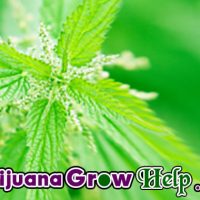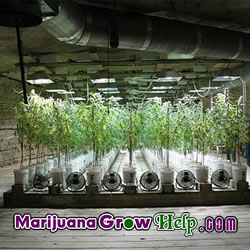Avoiding the Pitfalls of Cannabis Cultivation

6 Pitfalls to Avoid when Cultivating Marijuana
As a new cannabis grower, there’s a lot of things you have to learn and keep in mind at every stage of growth, from seed germination through to harvest, trimming and curing. Quite understandably, it can get to be rather overwhelming, so here’s a quick review of some of the common pitfalls of cannabis cultivation and how you can avoid them.
#1 Don’t Tell ANYONE You Grow Pot
Don’t tell other people: this is the number one pitfall of cannabis cultivation, and it’s sad because it is truly so easy to avoid. It’s easy to get excited when you first start your grow, and you may wish to tell your closest friend(s) or family, but resist this temptation at all costs. Keeping the knowledge of your grow to yourself not only protects you against unwanted disclosure / exposure by other people, but also protects you from theft or being targeted by criminals who may learn about your grow and target your crop as a result.
Over / Under-watering Your Plants
Use a soil moisture meter to measure the moisture content in your soil are available in most garden supply stores, and are a great tool for keeping track of your soil moisture. Under watering will cause your plants to wilt and could even kill them, while over watering will cause waterlogged plants that are more susceptible to rotting and drowning.
Wrong pH Balance
When the pH of your soil is too acidic or too basic, the roots of your cannabis plants can no longer take up and make use of the nutrients in your nutrient blend. If you start to notice issues in your plants’ growth, such as yellowing leaves or signs of nutrient deficiency, do a quick check and make sure the pH of your soil is somewhere between 6.5 – 7.0; this represents a neutral pH zone, ideal for your plants. Use a soil test strips to check your soil levels
Not Enough / Wrong Type of Light
Although you can get away with growing cannabis under fluorescent lights and other weak light sources, your results and yields really won’t compare to the use of professional marijuana grow lights like high pressure sodium (HPS) and metal halide (MH) lights. Metal halide are great bulbs for use during the vegetative stage of growth, while HPS bulbs will give you superior bud growth and yields during flowering. Also make sure that you have enough lumens per square foot; cannabis flourishes with 4,000 – 7,000 lumens of light per square foot but should have an absolute minimum of 3,000 lumens to grow well.

Indoor or outdoor, small or large – learning the basics of marijuana cultivation is the first step in successful growing.
Overheating
Your plants are sensitive to the temperature in your grow room, just like you are. As a general rule of thumb, spend some time in your grow room and under your grow lights; if you find it uncomfortably hot, then chances are good that your plants are too hot as well. Daytime temperatures for cannabis should stay between 70 – 80 degrees. Hotter temperatures will cause your plants to lose more water, thus they will drink more and can become susceptible to nutrient burn as a result.
Nutrient Burn / Nutrient Deficiency:
While nutrient burn is more common, you can also wind up with nutrient deficiency if you don’t give your crop enough of what it needs. To avoid nutrient burn, always introduce nutrients in very small quantities and gradually increase the amounts. Also, only use nutrients in your water every 2 – 3 times you water, at most. If your plants start showing signs of nutrient burn, stop all nutrients and water them with pure, pH-neutral water.
